Postmortem sounds so grisly, doesn’t it? I was tempted to call this a retrospective, but that sounds a bit foofy. So here we are. This isn’t even a true retrospective, because AI War is still going strong and looks to remain that way for some time.
The time period this postmortem will examine is May 2009 through the end of May 2013.
As an example of what I mean by “still going strong,” AI War has grossed another $30k since the end of the period that we’re considering. Not grand numbers compared to some indies, but pretty unusual for a game that is older than four years I expect. I bring this up because I think this demonstrates the validity of the ongoing-support model that Arcen has used for AI War, which is a model I hope to see more game developers adopt. More on that later.
I will warn you that this is perhaps excruciatingly long of an analysis, so feel free to skip around to the parts that interest you. On the other end of things, for other indie developers (and prospective ones), I hope that all the detail will prove useful.
First, Some Sales Numbers
So that we have some context for what I’m going to be talking about, let’s look at the performance of the game in the metric that matters most to game developers who want to stay in business: sales. The strong sales of AI War are in fact all that has allowed us to develop almost every game that has come after it at Arcen, incidentally (an unfortunate trend we have only recently managed to break).
The values below are all gross sales prior to distributor cuts, so typically that means our actual cut was 30% lower. Except that’s not always quite true, because in the case of our direct sales our cut is only 8% lower. Oh, and this is all in USD to be clear.
Total Sales
The red line shows our total cumulative sales over time, by year. This is probably the clearest view of overall earnings, since it’s a very very literal representation of earnings on each year.
The biggest caveat on total sales is that both 2009 and 2013 are only partial years:
- 2009 runs from May to December, so only 7 months instead of a full 12. It also only includes 3 months on Steam rather than a full 12.
- 2013 runs from January through the end of May, so only 5 months instead of a full 12. It’s already been a very good year for AI War thus far, though.
- Regarding 2009 and 2013, bear in mind that revenue varies seasonally. On an average year, almost half of our income comes in Q4 (yay holidays). The main example where this was 2012, which was a down Q4 for most B2C industries (even outside of gaming) from my understanding. In other words, consumer spending was down. The rest of 2012 was pretty great though, at least for us.
This data is not 100% complete, but it’s close enough:
- All of the Steam, GamersGate, and Impulse data is fully accounted for.
- Our direct sales stats from 2010 have been partly lost, and I suspect that they are off for 2011 and 2012 some as well. So the numbers there are a bit lower than they should be, but it’s not enough money to matter more than a few thousand dollars.
- All other sources of income have been ignored, since they are not high enough to amount to more than around $10,000.00 total.
Wow that was long. I’ll go ahead and post that chart again so you don’t have to scroll up and down while you read the below sections. The below chart is the same as the one higher up.
Year By Year
The blue line is a very literal representation of sales volume per year. Overall the yearly gross numbers were (since they are hard to see on the chart):
- 2009: $118,517.39
- 2010: $274,360.51
- 2011: $381,443.77
- 2012: $153,527.69
- 2013: $87,920.69 (as noted we’ve had another $30k added to that since May)
- Total: $1,015,770.05
Of course 2013 looks depressingly low if you take it out of context, but please don’t take this as looking like AI War is tapering off this year. If anything it’s having a huge resurgence since a low point of 2012.
It’s hard to know where exactly AI War will end up for the year, but it’s already at around $120k. From my projections based on recent performance, I think that a good range of total expected income for the year is between $185k on the very low end, and $250k on the upper-middling end.
It could blow past that upper end of my projections, which happened in both 2010 and 2011, for instance, but I like to keep my projections of future income as conservative as possible. Even doing that, I still shoot myself in the foot more often than I would like with projections for games-that-are-not-AI-War.
Still super long! Let’s see that same graph again so you don’t have to scroll back up:
Adjusted Yearly
The green line is not a literal representation of anything, but rather attempts to show the gross rate of sales on a year by year basis. In other words, it’s looking at the periods of time in question and trying to show how fast the game was selling on each period. The numbers it came up with:
- 2009: $355,552.17 (adjusted up from $118,517.39)
- 2010: $274,360.51
- 2011: $381,443.77
- 2012: $153,527.69
- 2013: $211,009.65 (adjusted up from $87,920.69)
2009 is way off, but it’s good enough to be somewhat illustrative I guess. I was trying to represent how fast the game would have sold if it had been on Steam the entire year. Looking at the actual numbers more closely now, probably something closer to $200k would be more correct, but it’s hard to say.
2013 is actually on the lower-middle end of my projections, so that’s a really good guess!
I arrived at the numbers on the green line simply by extrapolating linearly from the months-on-Steam versus months-in-the-year, and for 2009 that came out way too high, and for 2013 it came out in the range of accurate, but slightly conservative (since it doesn’t account for seasonal fluctuations in sales volume).
Distributor Stats
I didn’t run these statistics on a year-by-year basis, but over the lifetime of Arcen here are some interesting statistics.
- 91% of our income comes from Steam.
- In 2009 and the first half of 2010, this number was closer to 70%, but it has steadily risen since then.
- About 3% of our income comes from direct sales.
- Thus 6% of our income comes from all other distributors.
- Almost the entirety of that comes from our top two non-Steam distributors: Impulse and GamersGate. As in, all but about a tenth of a percent.
- Our partnerships with Green Man Gaming and Gog.com are too recent to really make an impression in 4 years of historical data, lest you wonder what is up there. They’re great distributors; I just don’t have enough data to really include it in this graph. And anyway, neither of them sell AI War yet.
Stats By Game
It helps to have some context for AI War in terms of Arcen’s overall library. We’ve handled each game differently, and this helps to explain why. Unlike the sales numbers and the by-distributor numbers, these are rough approximations. But they’ll do for our purposes here:
- AI War franchise: 62% of Arcen revenue historically.
- Bear in mind that it’s also our longest-running thing by far, so is also a bit over-represented.
- Tidalis: 6%
- The only reason it’s even this high is because of an Indie Puzzle Pack it was in on Steam, and some other promotions like that. Without those things, the number would be closer to 3%.
- Tidalis has made back around 50% of the costs it took to create them.
- Valley 1 and 2: 25% revenue historically.
- As of early this year — prior to the release of our latest title Skyward Collapse — it makes up about half of our month to month income these days. So to some extent the low percentage has to do with these games having a shorter time on the market compared to AI War.
- That said, these two games have made back somewhere less than 50% of the costs that it took to create them. They were very expensive to make.
- The reason that exact figures on the total cost to make these games aren’t available is that it kind of depends on how you allocate things. We spent a lot of our time on engine development during the creation of these two games.
- If you don’t count the engine development work and just look at the total spent on things that only benefit those two games and those alone, then we’re probably closer to 70% of breaking even.
- Shattered Haven: 1%
- This game has only been out for a couple of months, but even so it did really disappointingly. Worse than Tidalis, which we had thought was going to be our all-time low.
- This one hasn’t fared well with the press, and a lot of players won’t really give it a look too much. But those who have been playing it have been reporting really enjoying it.
- Feedback during our private alpha for this game was overwhelmingly positive, so we were really surprised by its reception in the wider market. Just goes to show you never can know.
- If you are generous and ignore most of my efforts in 2008 to make the bulk of this game, then we’re maybe around 35% of the way to breaking even on this title. Urgh. If you include almost a full year of labor way back then, the percentage drops depressingly low. So let’s not do that, and just consider that hobby time on my part. 😉
- Skyward Collapse: 6%
- This game has been out for less than a month, and it’s already 6% of our total historical revenue. That’s… uh, really good. It broke even within 3 days of being out, making it actually our first title since AI War to ever break even.
- This title has had our second-best launch ever in terms of revenue, behind Valley 1 but ahead of AI War. In terms of units, it’s our best launch ever by a long shot (this game is a third the price of Valley 1).
- My best projections for the moment are that Skyward Collapse will make up around 33-50% of our monthly income for the foreseeable future, while the Valley and AI War franchises divide up the remaining percentage about evenly.
- Note that this doesn’t indicate that revenues from Valley or AI War are dropping; they are actually holding roughly steady, with perhaps a bit of a rise for AI War. It’s mainly that Skyward is a large new revenue source alongside them.
Releases, Updates, and Major Events Timeline
Okay, so now we have some sales numbers year by year. Let’s put these things in further context. The links go to the release notes on our wiki, if you are interested in those.
2009: $118,517.39
May 14, 2009: 1.000 (First Official Release)
May 23, 2009: 1.003 (First Release On Impulse)
June 29, 2009: 1.008 (First Release On GamersGate)
October 20, 2009: 2.000 (First Release On Steam and Direct2Drive)
Prior to the game releasing on Impulse, we had literally zero sales. Ouch. Once the game game out on Impulse, then we started doing really well. During some mild discount promotions we were able to repeatedly get up into their top 5 best selling titles, and we made a surprising amount of money with them.
Enough, between them and GamersGate, to fund the art revamp and other improvements that went into the 2.0 version that was the first one that went on Steam.
We had a curious amount of good luck with Impulse in particular, because their audience at the time was so space-game focused (what with Stardock’s games at the time: Sins of a Solar Empire, etc). On Direct2Drive, by contrast, we had really wretched sales by their and our standards. Other indie games were doing far better, but for whatever reason our game just didn’t connect with their audience at all.
That’s been something that has actually been a theme with most distributors, actually. Aside from Steam, Impulse, and GamersGate, AI War has done very poorly with other distributors. I guess it really has a lot to do with the audience in question and what they are interested in.
2010: $274,360.51
January 12, 2010: 3.000 (First Official Release Of The Zenith Remnant)
September 14, 2010: I freak out over flatlining sales.
September 14, 2010: I respond to the huge outpouring of support.
September 16, 2010: I clarify that we are debt-free, and what stands to be lost.
October 26, 2010: 4.000 (First Official Release Of Children of Neinzul, First Unity Release)
Q4 2010: Waaay more than 50% of our income hits from October 26th onward, thus nullifying my freak-out from September (happily). I don’t have exact numbers handy, but on Steam alone it was about $146k, so that’s 53% of our yearly income right there. At that time we were still making only around 70% of our income from Steam, so I can estimate that around 69% of our yearly income came in Q4 that year.
In other words, my freak-out was entirely justified at the time, and we did indeed have to shed staff in the middle of 2010 (only time we’ve had to do that). But then we bounced back almost immediately after that. In many ways I regretted the freak-out because it then gave us a reputation for being financially rocky and unsuccessful in general.
But on the other hand, would our income have been so high in Q4 had I not spoken out? We got lots of support from both players and press when our predicament came to light, and it’s impossible to quantify how much that helped us actually pull out of our predicament.
2011: $381,443.77
January 27, 2011: 5.000 (First Official Release Of Light Of The Spire)
May 25, 2011: AI War: Alien Bundle Released
July 05, 2011: AI War As Daily Deal In Steam Summer Sale (85% Off)
2011 was a bit funny, because for most of it we were not even working on AI War very heavily; we were focused on Valley 1 almost exclusively. We did fewer updates in 2011 than in any other year, I’m pretty sure.
However, this worked out well timing-wise because the 5.0 version was extremely good and there had been a lot of fatigue in our core playerbase from all the changes that came in quick succession around the end of 2010 as we moved into the 4.0 era and then the 5.0 era. So having a relative respite from huge numbers of changes and additions, where players could just play the game, was clearly welcome.
The Alien Bundle’s release, on the other hand, was a massive success for us with almost no effort. It wasn’t a bundle in the modern sense of bundle; it was just a “gold edition” sort of thing that packaged the base game plus the first three expansions all into one package for one lower price. This sold like crazy, and was a big part of the ongoing financial success of AI War.
The other huge thing in 2011 that made it an unusually record-breaking year was the Daily Deal slot in the Steam Summer Sale. Holy smokes, we made around $136,000.00 in 24 hours with that. Never before or since have we made that much in that short of a period of time. That was averaging $94 per minute for 24 hours, which is just crazy.
2012: $153,527.69
October 19th, 2012: 6.000 (First Official Release Of Ancient Shadows)
This was our first new paid content for AI War in 22 months, which was crazy by our standards. To say that our players were hungry for more would be something of an understatement.
We’d been focusing on Valley 1 for so long that I think a number of them were wondering if we’d largely put AI War into cryo freeze. That had never been our intent, but Valley 1 wound up requiring way more time and resources than I’d ever predicted — that is a whole other story of mixed folly and success, really — and we could only focus on so many things at one time. So AI War stayed on the backburner… and stayed… and stayed…
We had picked back up work on doing more updates in 2012 than we did in 2011, though, for sure. So it wasn’t like the game was stagnating during this period by any stretch. It actually evolved quite a bit in terms of the polish and so forth on the core mechanics. The 6.0 release was really quite a cumulative perfecting of everything that had come before, alongside the new expansion.
Even so, just doing one expansion and focusing the rest of our time on free updates/polish alone did not make this a stellar year for sales. Though I’d say the real culprit was the Q4 low sales volume in general. The holiday season just wasn’t strong for anybody, since consumer spending was down. On average this year might actually have been north of $200k for AI War had it not been such a lousy holiday sales period.
2013: $87,920.69 (as noted we’ve had another $30k added to that since May)
June 7th, 2013: Arclight Bundle with IndieRoyale
June 17th, 2013: 7.000 (First Official Release Of Vengeance Of The Machine)
June 17th, 2013: AI War Four Year Anniversary Edition Released
October 2013: AI War Expansion 6 To Be Released
Bear in mind that none of the events above are reflected in the $87k figure, and that the $30k figure includes only the AI War portion of the Arclight Bundle and less than a day of sales of the Vengeance expansion and the new Four Year Edition.
All in all this year we’re making an effort to bring AI War back to a more middle-ground level of updates and new content. Rather than being really paltry like in 2011, or super heavy like in 2010, we’re going for somewhere in between. So far so good, and players seem really happy, so that’s great.
Some Stats On Total Updates
The Post-3.0 Through Pre-7.0 Timespan (Once The Game Reached Baseline Maturity)
Overall this period spans 3 years, from May 10th, 1010 to June 17th, 2013. The stats for this period:
- 1,134 days in the period.
- 281 releases in the period.
- Thus 3.95 days on average between updates.
- For three freaking years.
- Overall 2,800 individual changes in the period.
- Thus an average of 9.96 changes per release.
- Thus an average of 17.65 changes per week.
- For three freaking years. 😉
The 1.0 Through 3.0 Period (Pre-Full-Maturity)
The game was solid during its first year, and picked up awesome reviews and lots of new players. In fact, Metacritic named AI War the 40th Best-Reviewed PC title of 2009. A figure which includes both AAA and indie games, so that’s pretty darn cool.
All that said, it wasn’t until the game reached version 3.0 — alongside the release of the first expansion, The Zenith Remnant — that it really reached its full potential. And of course it kept growing from there, but 3.0 marked the turning point of where the base gameplay experience was truly what I had wanted it to be in all respects.
Anyway, the stats:
- 525 days in the period.
- 21 major releases in the period.
- Thus 25 days on average between updates.
- Unfortunately, due to how we kept track of the release history back then, there were a lot of more minor updates between 2.0 and 3.060 that got lost in the shuffle.
- On average, between 2.0 and 3.060 it was likely more along the lines of a release every 4 days.
- Prior to 2.0 the 25 days between releases is probably about right.
- 2,148 individual changes in the period.
- Thus an average of 102.28 changes per major update.
- Overall you will notice that the 525 days saw 76% as many changes as the next 1134 days combined.
- Another way of putting this is that there were 65.7% more updates in the first 525 days than in the remainder of the life of the game (so far).
- Generally speaking this was indicative of the game still finding its footing during this period, and so lots more smaller changes were made as compared to fewer moderate-sized or larger changes later on.
Lots And Lots of Words
The release notes for our games are always really long, because a lot changes and there are a lot of things to explain and people to thank. All in all, the AI War releases through version 7.0 are comprised of 235,188 words. As a point of reference, the novel “Tom Sawyer” contains 70,570 words, and the Lord of the Rings Trilogy is about 473,000 words. So… lots of words.
Wow that was a lot. How about a trailer to break up the wall of text? 😉
The Various Models Of Selling Games
I said that I really believe in the model of ongoing updates that AI War has used, and that I hope other developers will also use this model. Most developers I’ve seen tend to fall into one of four camps:
- Release and that’s it aside from (maybe) bugfixes.
- Okay, so that’s most developers.
- Release, then add on paid content with no free content aside from bugfixes.
- Only a few developers do this. Usually for the PC, and usually either RPGs or Strategy titles. It’s not a bad model, particularly since most of them include lots of modding capabilities if these are AAA games in question.
- Release, then do tons of updates for free and no paid content additions.
- This is obviously awesome for consumers, but there’s a reason comparably few developers do this: the developer has to already be raking it in for this not to absolutely fall flat on its face. So Minecraft and Terraria can afford to do this, sure, but not most other developers.
- Release free or cheap (or expensive), then augment with F2P-style purchases.
- Certainly trendy. I’m not a fan, and I’ll leave it at that.
The model that I’m proposing are a fifth and sixth, which I don’t think I’ve seen used aside from AI War. Or at least that isn’t publicized very well, and that not many developers use:
- Release at a normal price, then do copious amounts of free content updates as well as occasional paid expansions.
- This is the model AI War uses, and I think that the results above speak for themselves in terms of finances. But more on that in a bit.
- Release at a low price with a smaller base game, then if it’s popular do lots of free content updates as well as occasional paid expansions.
- This is the model that Skyward Collapse uses, and it’s a refinement of my thinking based on the AI War model.
- The premise here is that this is the same as the AI War model, except that the base game is cheaper both for customers to buy and for us to make. So it’s lower risk for customers and for us, in other words.
- Then if the game takes off (as Skyward has), we do more free updates (benefiting even casual customers of the base game), and more paid content (thus keeping us steady while also satisfying the desires of the core playerbase for yet more and more content).
The benefits of the models used by AI War and Skyward Collapse are manifold. Certainly there are financial benefits to the developer. However, the benefits to players are also immense.
Assuming that each paid content expansion gives players an exciting value and isn’t over-expensive for the developer to produce, that’s a win on all sides. However, it also does something that you can’t accomplish any other way: making huge huge huge game worlds that players can inhabit for years.
We have players that have logged more than 600 hours in AI War, and loads and loads more who have logged 100-200 hours or even more. There are some who still consider themselves “new” to AI War despite having more than 100 hours logged in the game. That sort of longevity just isn’t possible unless you are running an MMO subscription, or you happen to have an incredible outlier bestselling title like Terraria or Minecraft.
What I believe is demonstrated by AI War is that niche products can still be treated in similar ways, and see similar growth. AI War is a poster child for the success of serving a small niche: Strategy games themselves are a small niche in gaming. But ultra-hardcore strategy games are a small niche even within that niche.
That AI War can gross more than a million dollars (and growing) while serving that sort of niche — and have players happy about the prices they’ve paid, and not grumbling about it as they do with certain $80+ titles that I can think of — is quite something. It shows that there is a lot more life in the “small spaces” that the big AAA publishers are ignoring. And it’s something that I think should be a hopeful sign to players who love various “dead” genres. Most “dead” genres could provide this level of developer income and this level of player happiness for the right game sold the right way, I’m convinced.
The Skyward Collapse model takes things even further. It broke even within three days, but we’re already working on the first paid expansion for it (as well as already having released tons of free content updates). We expect to put out two expansions for Skyward this year in total. The thing is this: it will take 5 Skyward expansions plus the base game of Skyward to equal the original cost of the base game of AI War. That’s… an astoundingly good value for customers, really. And obviously doing great for us as a developer, as well.
The Benefits Of The AI War Model
I don’t really think that the Skyward Collapse model is the end-all model. There’s a place for every model of selling games in the market. And when it comes to games with a higher cost to initially develop, the Skyward Collapse model simply isn’t feasible. In our case, all that engine development we did during the development of all our past games made it possible to create Skyward Collapse for a much lower cost than otherwise would have been the case.
In the cases where the development costs remain high, however, there’s nothing stopping you from using the AI War model of ongoing support, and that’s the coolest thing to realize here. Lots of people talk about the long tail, but AI War isn’t quite in that model if you look at it from Arcen’s perspective (if you look at it from Steam’s perspective, then all indie games absolutely are part of the long tail for them).
But for Arcen, we’ve been able to see mostly-steady-ish income (accounting for environmental factors and other related secondary influences) from AI War for four years now. This is not the way a sales graph for a four-year-old product is supposed to look!
The expense of creating a new expansion for an existing game is vastly less than the expense of creating the base game itself. The release of new expansions also drive further sales of the base game itself. AI War’s fourth expansion, Ancient Shadows, broke even on its creation expenses within a week when you look at increased sales of the base game plus its own direct income.
Given that, it only makes sense to pack expansions full of so much awesomeness that they are clearly an excellent deal for players. Don’t give me any of that horse armor junk! Make the expansion so exciting on multiple levels that it is an obvious choice to buy it for the players who are into the game. This is not only something that helps keep the existing game afloat, but it also lets you self-fund further games that your playerbase may quite enjoy as well
And most importantly it lets you not feel the need to abandon supporting that existing game when you potentially hit it really big with a title in the future. Regardless of if Skyward Collapse and/or other future titles come to eclipse sales of AI War, we won’t stop doing new AI War content until players lose interest to the point that the release of new AI War expansions is becoming unprofitable.
The funny thing is, I’ve worried about that day coming “soon” ever since early 2010. I was really pleased with how AI War was selling in early 2010, but knew that couldn’t last forever. So it was time to diversify and do our second full game, Tidalis.
The only thing was, Tidalis flopped financially (as noted above). It was a huge loss for us, even moreso at the time it released. And around that time, sales of AI War itself seemed to be drying up, too. Tidalis was supposed to get all our eggs out of one basket, but instead it cost us tons of money and left us in an even worse predicament than when we started. Nevermind the hugely positive reviews that Tidalis got; that didn’t make a difference in the marketplace.
So hence my panic in September of that year. Things looked incredibly bleak. There was no way we could have funded working on a completely new game at that point, and even if we did there was no guarantee that would do any better than Tidalis in terms of breaking even (and if you remember the Valley games and Shattered Haven, you’ll see just how true that is).
What saved this company is a renewed focus on AI War and ongoing support for it. The huge upgrade to AI War 4.0 and moving that to the Unity 3D engine (thus adding Mac OSX support and a host of other cool things), and the two new expansions that hit around that time period, turned a bad year into an awesome one. With more than a little help from our friends (players, press) of course.
This Company Is Built On AI War
The AI War franchise is what funded the development of both Tidalis, Valley 1, Shattered Haven, and Skyward Collapse. Valley 2 was funded by Valley 1. And all of the expansions for AI War were funded from their own franchise.
That is incredible! AI War has not only evolved into something better and better that pleases its players directly, but it is also responsible in a fairly direct way for all the enjoyment that anyone has had from any of the other games we’ve made. It’s allowed us to remain publisher-free (and in business at all) despite some missteps over the years, and it’s allowed us to really push the boundaries of a number of genres and do some cool and unusual things.
And as much as I worried that AI War was going to “dry up” and no longer be able to support the company very well in 2010, 2011, and 2012… now I’m not so worried about that. Mainly because all our eggs aren’t in that one basket anymore (hooray for the Valley games and Skyward Collapse), but also because the AI War engine just seems to keep going and going. It’s a pretty crazy thing to see.
What I’d like to see is other indie developers pursuing a similar approach and coming up with similarly huge game universes. I think that big game universes are really fun, and as a player I’d love to see more of that sort of thing. And as a developer, I think that this sort of thing is also just good business sense, when the right game comes along.
Obviously, it takes the right game. We’re pursuing this with AI War and Skyward Collapse precisely because they had the legs to do so. We didn’t pursue this with any of our other games, because they didn’t have the same legs. With each game we had planned to, but when the sales numbers didn’t work out then we abandoned any plans for expansions with them. Sometimes the base game just has to stand on its own and that’s that. With something like Shattered Haven, I’m extremely proud of it but the larger market just doesn’t feel the same way. And so that has to be that.
An Amusing Aside
I’ve been doing hobbyist game development and level design since I was around nine years old. It’s just always been a thing I did, I never thought of it as a career. I did mods and levels and such for dozens of games.
Once I became a professional programmer, then as a hobby I programmed games. First I worked on Mario clones that were also adventure games (none of that code was used for Valley 1, but the lessons I learned about making platformers sure were). This was round about 2002-2003.
Then in 2008 I started working on a game called Alden Ridge, which later got renamed to… Shattered Haven. This was something I was really passionate about, and worked on for most of that year. Then I kind of got stuck on one aspect of the game design, and put it aside for “a little while” (turns out that would be four years, in the end).
Specifically, I put Shattered Haven aside to work on a “side project” called AI War. I’d had the idea for it, and was frustrated with the sorts of co-op strategy games that were on offer in general in the market. So I decided to make it, mainly just for myself and my dad, uncle, and my uncle’s co-worker. I still didn’t have any thoughts of selling it, until early in 2009. Suddenly it kind of hit me that “Oh hey, I might actually be able to sell this! It’s a cool game.”
And that’s how I became an indie game developer, completely by accident.
Conclusion
I hope that the facts and figures here are useful to other developers, and interesting to both our players and to others who follow the gaming market. I know I always love reading meaty postmortems.
We do things pretty unusually here at Arcen, both in terms of how we make our games and how we sell them. We don’t always get everything exactly right (who does?), but AI War has been a really big win for us and I think is worth emulating in terms of how it is sold and supported. So I hope this is at least interesting food for thought if you’re a developer (or want to be one).
Thanks for an awesome first four years, everyone!
(…And 6,000 words later, he was done writing this huge thing.)
UPDATE: A followup post was added on July 14th of the following year.

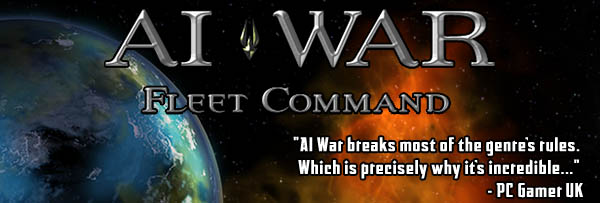

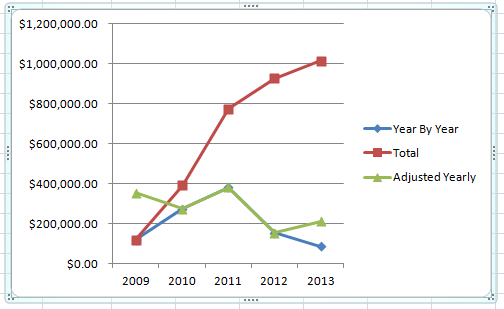
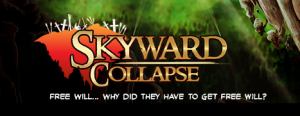
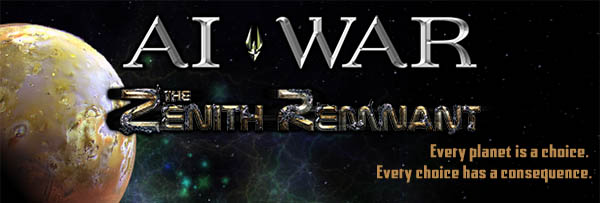

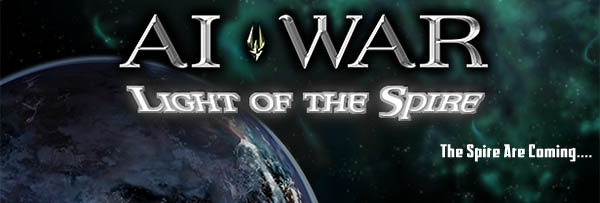
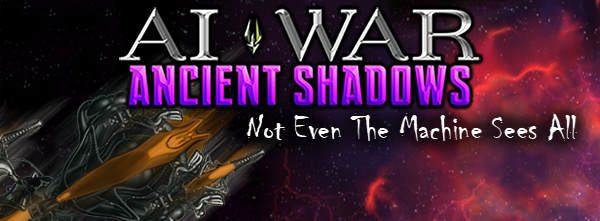
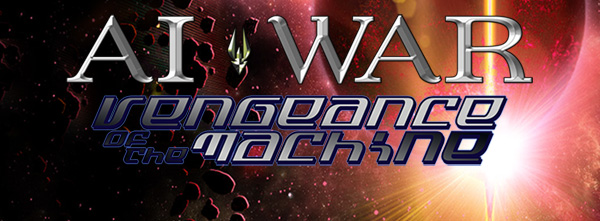

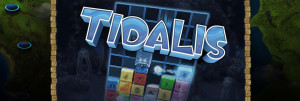



Really enjoyed the look back on what’s been an eventful ride (I only signed up at the release of ZR). Appreciate you taking the time to write it up and share it with your fans!
This was a really interesting read, and I’m glad you guys are still going strong.
I have mixed feelings about the Valley games, but I’m happy they’ve found an audience, and it’s even better news that Skyward Collapse is doing so well.
Even with the occasional misstep, Arcen have always struck me as a force for good in an industry with far too many companies who exploit their staff and treat their customers with contempt. Good luck with whatever you do next!
Wow! What an incredible article. Thanks for sharing. It’s really interesting to hear about your model. I can’t believe you did so many updates for three years!
This was a fantastic read, I love getting to see info like this about how things have gone for companies involving their various games. I also really enjoy your model of updating games; it’s part of why I’ve tried to purchase everything released so far, along with everything (yes, including Tidalis) being immensely fun :). Looking forward to later this year when I can afford both Shattered Haven and Skyward Collapse!
You mention GOG. Are Arcen’s games going to hit GOG? I was recently made aware of you by a review (firsthour.net) and am be planning to pick up your DRM-free games at some point. GOG certainly will make me get there sooner.
Currently GOG carries our title Shattered Haven, and that’s the only thing. As for our other titles, that’s still under discussion.
We’d certainly love to work with them more, but we have both expansions and license keys, which has always prevented the partnership despite them approaching us and us approaching them at various times in the past.
Starting with Shattered Haven we did away with the license keys, so that was one barrier down. And we may do license-key-free versions for them if we can get past the expansions issue.
But in terms of expansions, that’s something we do for both AI War and Skyward, and at GOG in the forums and such that’s considered something of a bad word I think. I’m against horse armor DLC as well, but I think that expansion-style DLC is awesome for customers if it’s done right, and I’ve written about that at length.
So it really depends on if their policy expands a bit to include non-abusive DLC as being okay or not. Fingers crossed!
I had to scrap a much more detail comment sorry.
Basically, your games are so unique in mechanic that except for AI War, the gamer cannot easily figure out what the actual experience of the game is early enough to either pick the game, via review, or see the full realization of the deep options via tutorial.
I could explain it deeper if interested. I’ve been playing games for 30 plus years, I read about 1000 pc reviews a year, that’s your issue mostly.
Shattered Haven is a map by map puzzle, that’s part of the problem there, without very clear reason to pick it, the experienced gamer will pass it as a one-time only experience per map, the lousy graphics don’t help (if it was procedure oriented or allowed player improvement, changes the win/lose assessment).
Skyward Collapse reviews cannot explain to me why the funny jingle music and flipped tiles in every video, Populous like, but God that balances to reap the emotions of war, wrong music and video sorry.
A very good read, as I have toyed with the idea of developing an indie game.
I’m a huge AI war fan, and wish I could play it more.
Always been excited about the possibilities of the franchise expanding, and perhaps branching out. Wonder if there could ever be some persistence, or something exploring the universe in a little more detail.
Great job all around guys, there’s magic in Valley and AI War
Great post, thanks for all the info!
I had a question, are these sales numbers, the $1M over 4 years exclusively for AI war or for your company in total over that time? Are you including your other games in that figure?
TIA
You bet! That figure was just for AI War plus it’s expansions, which is maybe 60% of our company earnings. The gross figure for the AI War stuff is maybe $1.2 million or close, now. Bear in mind that some of our franchises (Tidalis, Shattered Haven) have sold very, very poorly. Under $20k in the latter case. So it really varies by game, I don’t have a magic recipe unfortunately!
Just coming here late following RPS’ Sunday Papers. As this post mortem is one year old there’s no data for Bionic Dues.
How does it fare? Will you apply the same kind of long term free/paid support as AI War ?
All righty, that was a great question. The more I wrote in order to answer you, the clearer that it became that it needed to become it’s whole own post! http://arcengames.com/followup-to-last-years-ai-war-postmortem-now-discussing-bionic-tlf-etc/